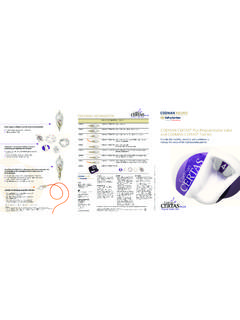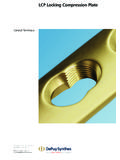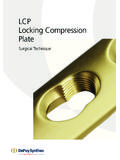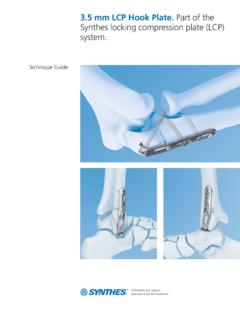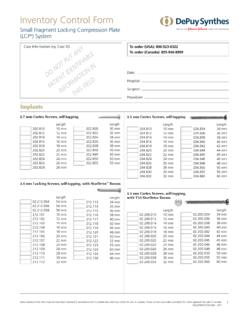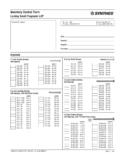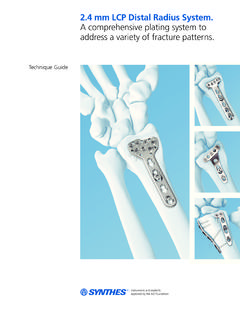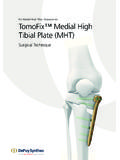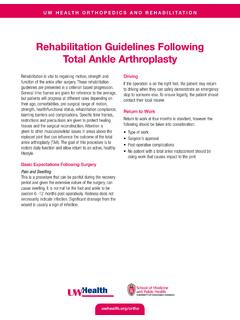Transcription of P.F.C. SIGMA KNEE SYSTEMS SURGICAL TECHNIQUE
1 Primary Cruciate-Retaining & Cruciate-Substituting SIGMA knee SYSTEMSS urgical TechniqueCHITRANJANS. RANAWAT,MDClinical Professor of Orthopaedic SurgeryCornell University Medical CollegeChairman, Department of Orthopaedic Surgery Ranawat Orthopaedic CenterLenox Hill HospitalNew York, SCOTT,MDProfessor of Orthopaedic Surgery,Harvard Medical SchoolOrthopaedic Surgeon, New England BaptistHospital and Brigham and Women s HospitalBoston, THORNHILL,MDJohn B. and Buckminster Brown Professor of Orthopaedics,Harvard Medical SchoolOrthopaedist-in-chiefBrigham and Women s HospitalBoston, Cruciate-Retaining Procedure4 Primary Cruciate-Substituting Procedure41 Appendix I: Ligamentous Balance in total knee Arthroplasty81 Appendix II: The External Femoral Alignment System90 Appendix III: Intramedullary Alignment Device91 Appendix IV: Extramedullary Tibial Alignment Device with Proximal Fixation Spike 96 Appendix V: Femoral and Tibial Insert Compatibility Charts99 Appendix IV, SURGICAL TECHNIQUE , edited by William L.
2 Healy, MD, Chairman, Department of Orthopaedic Surgery, Lahey Hitchcock Medical Center, Burlington, Mass. SPECIALIST 2 TECHNIQUEINTRODUCTIONT otal knee replacement is performed on a rangeof patients, of all ages, with various pathologiesand anatomical anomalies. As no single arthro-plastic approach is appropriate for every knee ,the surgeon must be prepared, as the situationindicates, to preserve or substitute for the posterior cruciate ligament. PCL sacrifice isindicated in patients with severe deformity, pronounced flexion contracture and in thegreater number of revision cases. Most primaryand some relatively uncomplicated revisioncases are suitable for cruciate-sparing proce-dures.
3 Where the ligament is to be preserved, it is essential that its balance in flexion be total knee SYSTEMS were designed as comprehensive approaches allowing intraop-erative transition from PCL retention to PCL substitution. The major difference in the design for the two prostheses is the incorporation of an intercondylar post in the PCL substituting tibial insert and its corresponding intercondylar receptacle in the femoral component, to com-pensate for the stabilizing restraint of the PCL. They were also designed to provide greater restraint in cases of revision surgery, and to meet the most demanding clinical and institu-tional single integrated set of instruments, the SPECIALIST 2 Instruments, was designed to make fully accurate bone resection and to accommodate most SURGICAL techniques and appropriate level of prosthetic constraint isdetermined through preoperative evaluationsubject to intraoperative confirmation.
4 Wheresoft-tissue constraint is identified, the system isdesigned to effectively address Cruciate-Retaining TKRemploys a posteriorly lipped insert, designedfor situations where the PCL is functionallyintact. Where there is tightness in the PCL, aposterior cruciate recession is indicated (seeAppendix I).PrimaryCruciate-Supplementing TKRuses a curved insert with improved contact areato supplement the PCL where the ligament hassufficient functional laxity to accommodate thegreater Cruciate-Substituting TKRincorporates a central polyethylene eminence inthe tibial insert to perform the function of anabsent PCL. The corresponding femoral compo-nent uses A/P cuts and chamfers identical tothose of the PCL-retaining component, allowingready transition without revision of the pre-pared implantation TKRThe geometry of the tibial insert allows for substitution of the PCL and/or MCL in revisionand complex primary situations.
5 The selectionof modular tibial and femoral stems and wedgeswill accommodate virtually any revision con-sideration. The system offers three levels ofconstraint to meet the varied requirements ofrevision cases: stabilized, constrained or FOR SUCCESSFUL TKRA ppropriate Sizing of ComponentsThis is attained through critical approximation of the A/P dimension of the femoral compo-nent to the lateral femoral profile. Undersizing will create looseness in flexion and possible notching of the femoral cortex. Oversizing will create tightness in flexion and increased excur-sion of the quadriceps Component AlignmentThis is accomplished by resection of the distal femur in the appropriate degree of valgus as determined by preoperative evaluation, and resection of the proximal tibia at 90 to its longitudinal BalanceThis is realized through the careful sequential release of medial constraining elements in varus deformity and lateral structures in Patellar TrackingThis is affected through accurate positioning of the femoral and tibial components, precise resurfacing of the patella, careful trial evalua-tion and.
6 Where indicated, lateral retinacular Cement FixationThis is achieved through controlled TECHNIQUE that ensures the establishment of comprehen-sive bone/cement/prosthesis extremity roentgenograms areobtained and the mechanical and anatomic axesidentified. Where the intramedullary alignmentsystem is selected, the angle of the anatomic and mechanical axes indicates the appropriateangle to be used in conjunction with the intra-medullary rod and the femoral locating device,thereby assuring that the distal femoral cut willbe perpendicular to the mechanical axis. It ishelpful to draw the femoral and tibial resectionlines on the film as an intraoperative templates are overlaid on thefilms to estimate the appropriate size of theprosthesis.
7 The femoral component is sized onthe lateral view. The A/P size is critical to therestoration of normal kinematics and quadri-ceps RATIONALESPECIALIST 2 instrumentation was designed to address the requirements of total - knee replacement procedures, to fully assure precise and dependable resection of the recipient bone and to serve a variety of SURGICAL options. Preparation may be initiated at either the femur or the tibia. The instruments may be employed with either the intra- or extramedullary align-ment approach. Bone resection is made at the appropriate level as determined through a cali-brated stylus assembly. A selection is offered of slotted and surface-cutting blocks.
8 Spacer blocks are provided for extension and flexion gap eval-uation. Patellar instrumentation is available for compatible preparation of either resurfaced or inset patellar SCOTT,MDProfessor of Orthopaedic Surgery, Harvard Medical SchoolOrthopaedic Surgeon, New England BaptistHospital and Brigham and Women s HospitalBoston, THORNHILL,MDJohn B. and Buckminster Brown Professor of Orthopaedics,Harvard Medical SchoolOrthopaedist-in-chiefBrigham and Women s HospitalBoston, skin incision is longitudinal and, wherepossible, straight. It is initiated proximally fromthe midshaft of the femur and carried over themedial third of the patella to the medial marginof the tibial joint is entered through a medial para-patellar capsular approach, extended proximallytothe inferior margin of the rectus femoris and distally to the medial margin of the indicated, the subvastus or the lateral approach may be and preliminary balance must bebased on the patient s preoperative deformityand soft-tissue stability.
9 The following is formild varus Appendix I for discussion of soft-tissue the knee in extension, the patella iseverted laterally. The medial tibial periosteumis elevated and a narrow 90 Hohmann retrac-tor positioned subperiosteally around themedial border of the medial condyle. Residualperiosteum is dissected posteromedially to thelevel of the insertion of the knee is flexed and a partial meniscectomyperformed. Any residual ACL is the knee in 90 of flexion,the tibia is externally rotatedwith posteromedial dissection,bringing its medial condyleclear of the femur. Medialmeniscectomy is completed,and attention directed to thelateral Hohmann retractor is positionedbetween the everted patella and the distolat-eral femur, exposing the lateral patellofem-oral ligament, which is incised retractor is repositioned at theinterval of the iliotibial tract and thetibial attachment of the capsule.
10 The capsule is dissected free from theinfrapatellar fat pad and a lateralmeniscectomy is performed. The lat-eral inferior genicular artery is coagu-lated. The insertion of the iliotibialtract is identified and the capsule dis-sected from the lateral tibial retractor is repositioned againstthe lateral tibial condyle. 7 ENTERINGTHEMEDULLARYCANALThe medullary canal is entered at the midline of the femoral trochlea 7 10 mm anterior to theorigin of the PCL to a depth of about 5 7 cmusing a 5/16" is taken that the drill avoids the cortices. It is helpful to palpate the distal femoral shaftas the drill is advanced. The drill hole may bebiased anteromedially to facilitate unobstructedpassage of the long intramedullary rod to thediaphyseal isthmus, if indicated by pre-operative X-rays8 THEINTRAMEDULLARYRODThe valgus angle with the appropriateRight/Left designation, as indicated on the pre-operative films, is set and locked into place onthe front of the locating device.
